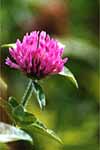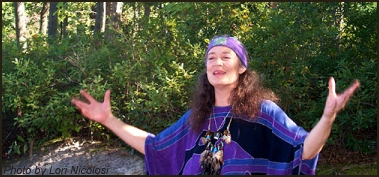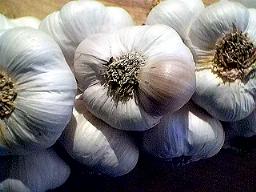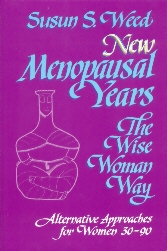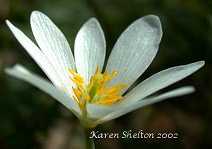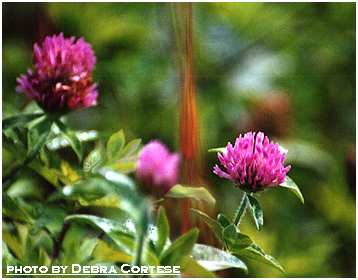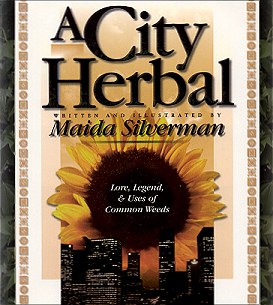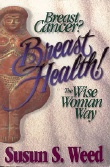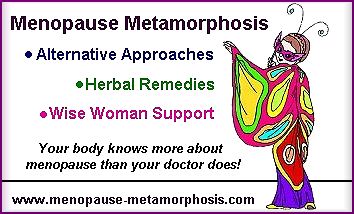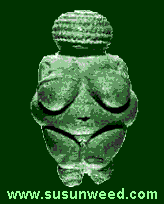Herbal medicine is the medicine of the people. It is simple,
safe, effective, and free. Our ancestors knew how to use an enormous
variety of plants for health and well-being. Our neighbors around
the world continue to use local plants for healing and health maintenance.
You can too.
LEARNING ABOUT HERBS
Information on herbs and their uses has been passed down to us in
many ways: through stories, in books, set to music, and incorporated
into our everyday speech. Learning about herbs is fun, fascinating,
and easy to do no matter where you live or what your circumstances.
It is an adventure that makes use of all of your senses. Reading about
herbal medicine is fascinating, and a great way to learn how others
have used plants. But the real authorities are the plants themselves.
They speak to us through their smells, tastes, forms, and colors.
Anyone who is willing to take the time to get to know the plants
around them will discover a wealth of health-promoting green allies.
What stops us? Fear. We fear that we will use the wrong plant. We
fear poisoning ourselves. We fear the plants themselves.
These fears are wise. But they need not keep us from using the abundant
remedies of nature. A few simple guidelines can protect you and help
you make sense of herbal medicine. This series of short articles will
offer you easy-to-remember rules for using herbs simply and safely.
When you have completed all eight parts of this series, you will be
using herbs confidently and successfully to keep yourself and your
loved ones whole/healthy/holy.
SURVIVAL IS A MATTER OF TASTE
Virtually all plants contain poisons. After all, they don't want
to be eaten! Because we have evolved eating plants, we have the capacity
to neutralize or remove (through preparation or digestion) their poisons.
Not all poisons kill, and even poisons that are deadly often need
to be taken in quantities far larger than can easily be obtained from
foods. (Apple seeds contain a lethal poison but it takes a quart of
them to cause death.)
Our senses of taste and smell are registered in the part of the brain
that maintains respiration and circulation - in other words, the survival
center. Plants (but not mushrooms) advertise their poisons by tasting
bad or smelling foul. Of the four primary kinds of poisons found in
plants - alkaloids, glycosides, resins, and essential oils - the first
two always taste bitter or cause a variety of noxious reactions on
the oral tissues, and the last two usually do, especially when removed
from the plant or concentrated.
Sometimes the taste of the poison in a plant is hidden by large amounts
of sweet-tasting starch. Fortunately, human saliva contains an enzyme
that breaks down these carbohydrates, exposing the nasty taste of
the poison. Since even tiny amounts of some poisons can have large
effects, for safety sake, take your time when tasting.
SAFETY FIRST
Because our sense of taste protects us against poisonous plants, it
is always best to take herbs in a form that allows one to taste them.
Consuming just one plant at a time, with as little preparation as
possible, gives us the greatest opportunity to taste poisons and is
therefore the safest way to use herbs.
One herb at a time is a "simple." When we ingest a simple
herb - raw, cooked as a vegetable, brewed fresh or dried in water
as a tea or infusion, steeped in vinegar or honey, dried and used
as a condiment - we bring into play several million years of plant
wisdom collected in our genes. When we ingest many plants together,
or concentrate their natural poisons by tincturing, distilling, or
standardizing, we increase the possibility of harm. Powdering herbs
and putting them in capsules is one of the most dangerous ways to
use them, especially those containing poisons. For ultimate risk,
play with essential oils; they are far removed from the plant, very
concentrated, and as little as one-quarter ounce can kill.
SAFETY SECOND, TOO
In the next installments we will continue to learn how to use herbs
simply and safely. We will explore nourishing and tonifying herbs,
the difference between fixing disease and promoting health, how to
apply the three traditions of healing, and how to take charge of your
own health care with the six steps of healing.
EXPERIMENT NUMBER ONE
You will need the following plants, all of which contain poisons
that you can taste: a head of lettuce (taste the leaves and the core
separately), some black or green tea (unbrewed), a fresh dandelion
leaf, strong chamomile tea (steep it overnight), a can of asparagus,
some fresh mint, a spoonful of mustard seeds, and a bottle of vanilla
extract.
Approach tasting a plant as you would tasting a wine. Begin by inhaling
the aroma. Release the bouquet by squeezing the plant until your fingers
are moist (or chew briefly and spit into your hand). Do you feel enticed,
repelled, or neutral? Does your mouth water? Does your throat clench?
Observe how you react to the smell. Does it sting your eyes? Irritate
your nasal tissues? Do you want to taste it?
We do not gulp our wine, nor do we merely wet our tongues; for best
effect, taste and smell a reasonably large piece, but don't stuff
your mouth. As you chew, move the plant material around in your mouth.
Roll it around with your tongue. Make contact with it for a full minute
but DO NOT SWALLOW. No, no, spit it upon the ground, or into your
hand, or the sink, or wherever you can, but do not swallow. SPIT IT
OUT.
What do you feel now? In your stomach? Your throat? Your head and
nose? What is your gut feeling? What sensations accompany the taste
of this plant?
It is best to wait until the previous taste is completely gone before
going on to the next plant. If you are doing advanced work with wild
plants, wait at least a day before you use or consume the plant in
case you have a delayed reaction to some component.
EXPERIMENT NUMBER TWO
Taste as in experiment one, but use these inedible (poisonous) parts
of common foods: lemon inner rind, apple seeds, rhubarb leaves, lettuce
root, the inner soft pit of a peach.
EXPERIMENT NUMBER THREE
Taste as in experiment one, these poisonous plants (fresh or dried):
wormwood leaf, goldenseal root, yellow dock root, Echinacea root,
eucalyptus leaf, motherwort leaf.
EXPERIMENT FOUR
Aromatic plants are rich in essential oils. We often use them to
season and preserve food. In small quantity, these oils are not harmful,
but concentrated, they threaten the liver, kidneys, and life itself.
Smell and taste, as in experiment one, as many aromatic plants as
you can: thyme, rosemary, oregano, lavender, sage, orange peel, cloves,
cinnamon, nutmeg. Brew strong teas (steep overnight) of these plants
and taste. Can you see, smell, or taste more essential oils? Smell
or taste one drop of the extracted essential oil of any of these plants.
FURTHER STUDY
1. What is an alkaloid? Medicinal plants often contain groups of
alkaloids. Name seven plants rich in alkaloids (specify the part);
then name at least three of the alkaloids in each plant.
2. What are glycosides? Name at least four glycosides and describe
the effect each has. Name seven plants rich in glycosides; specify
the part of the plant and the kind of glycoside.
3. What are resins? Name four or more plants (specify part) rich in
resins.
4. What are essential oils? Name a dozen or more plants rich in essential
oils (specify part).
5. What is the difference between a poison and a medicine? Are all
drugs poisons?
ADVANCED WORK
 Give the botanical
name (genus and species) for each plant you named in the further study
section.
Give the botanical
name (genus and species) for each plant you named in the further study
section.
 Taste a variety
of plants that grow around you. Warning: It is possible to experience
uncomfortable or harmful effects from this experiment. A book on poisonous
plants can reassure you that the plants you taste will not kill you.
It is best not to put plants such as poison ivy or poison oak in your
mouth. DO NOT TASTE HOUSEPLANTS.
Taste a variety
of plants that grow around you. Warning: It is possible to experience
uncomfortable or harmful effects from this experiment. A book on poisonous
plants can reassure you that the plants you taste will not kill you.
It is best not to put plants such as poison ivy or poison oak in your
mouth. DO NOT TASTE HOUSEPLANTS.
For permission to reprint this article, contact us
at: susunweed@herbshealing.com


